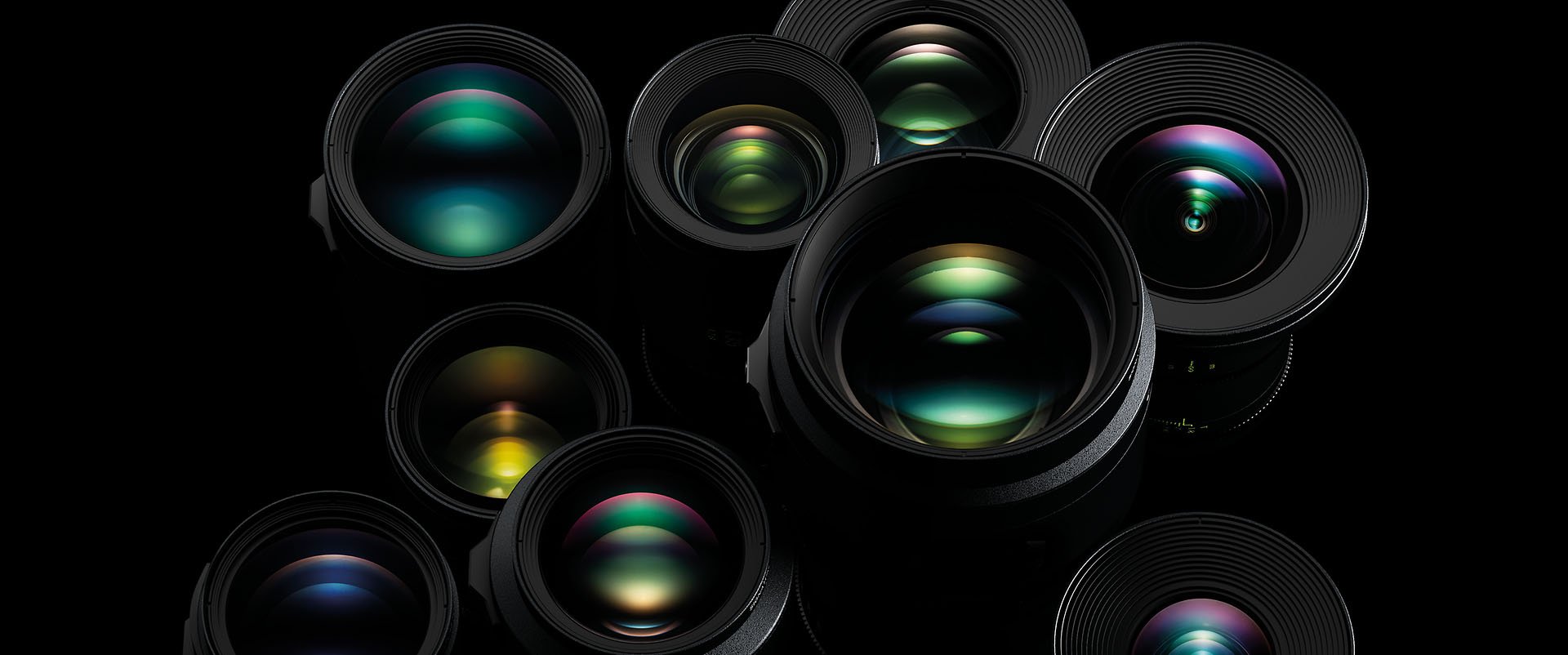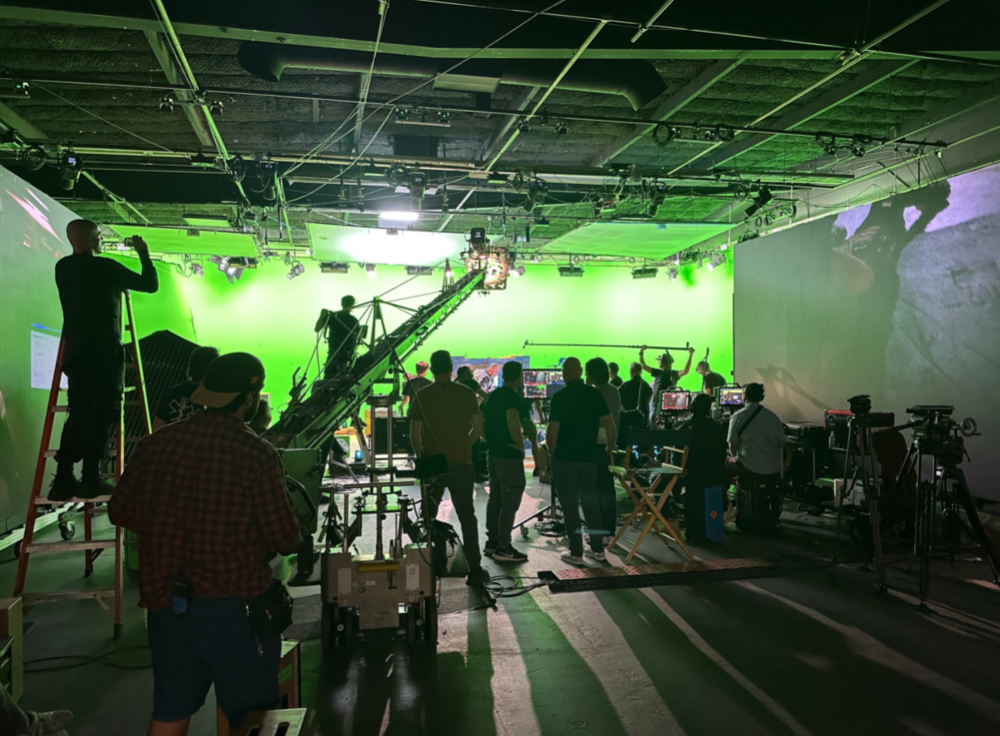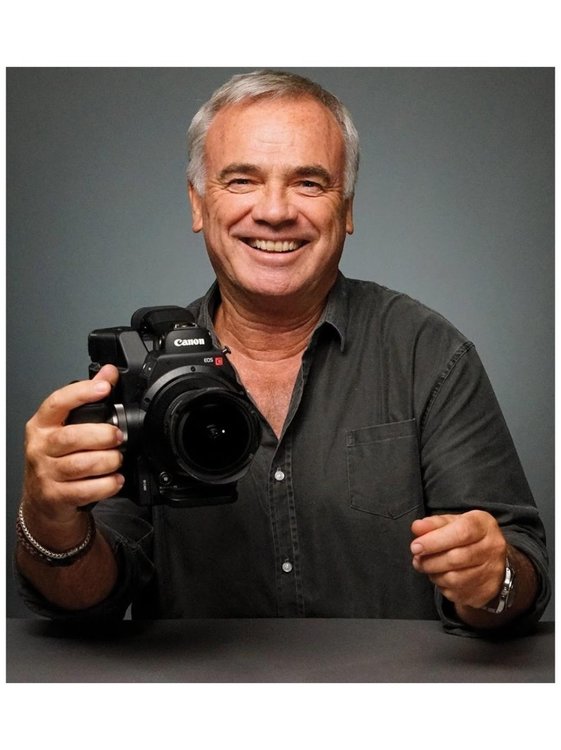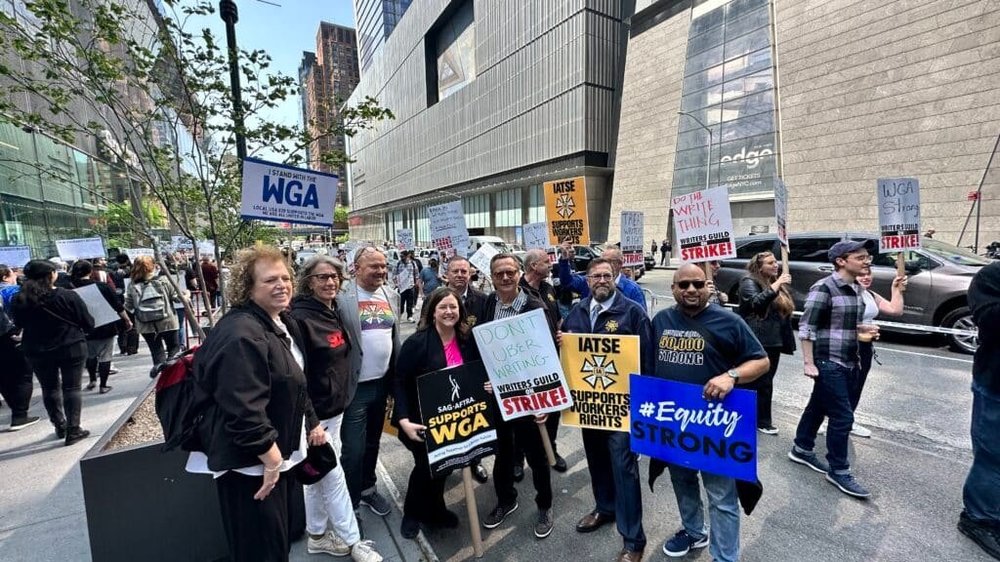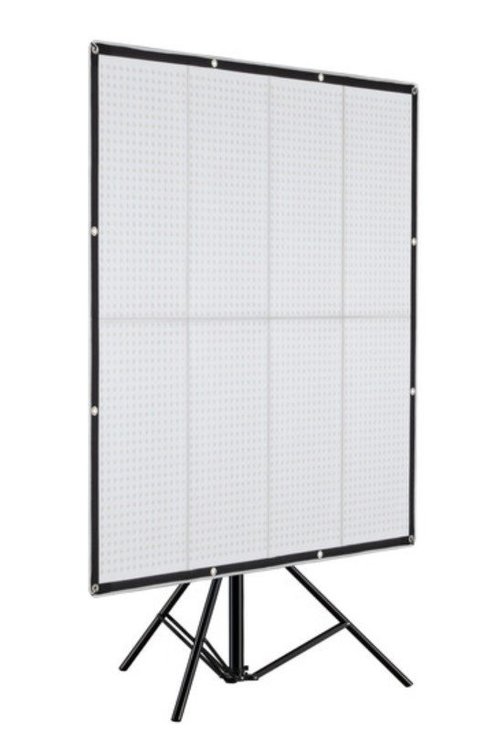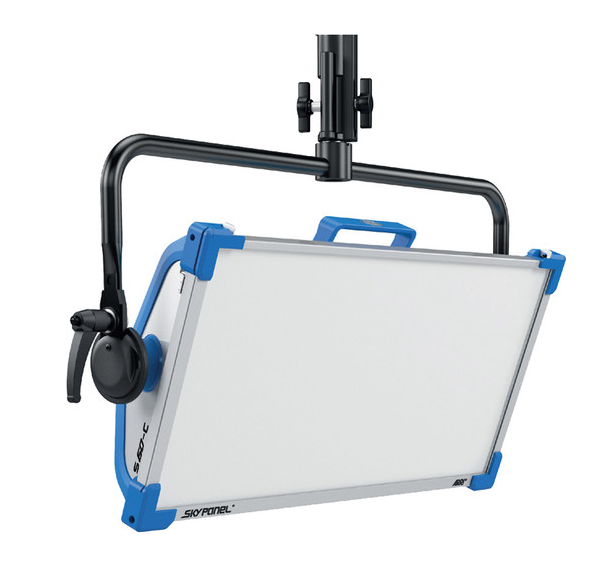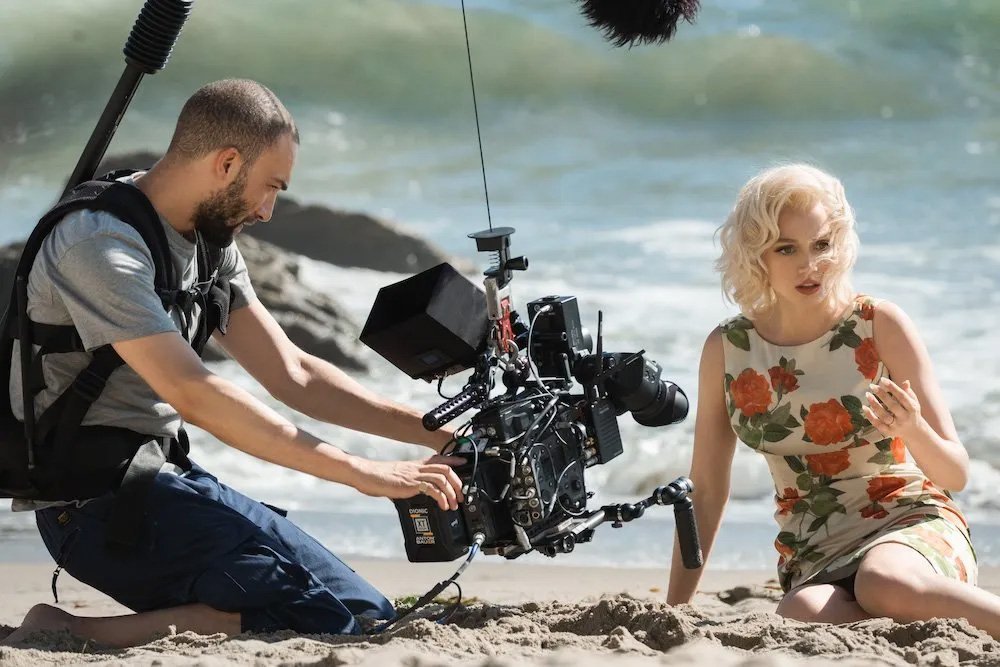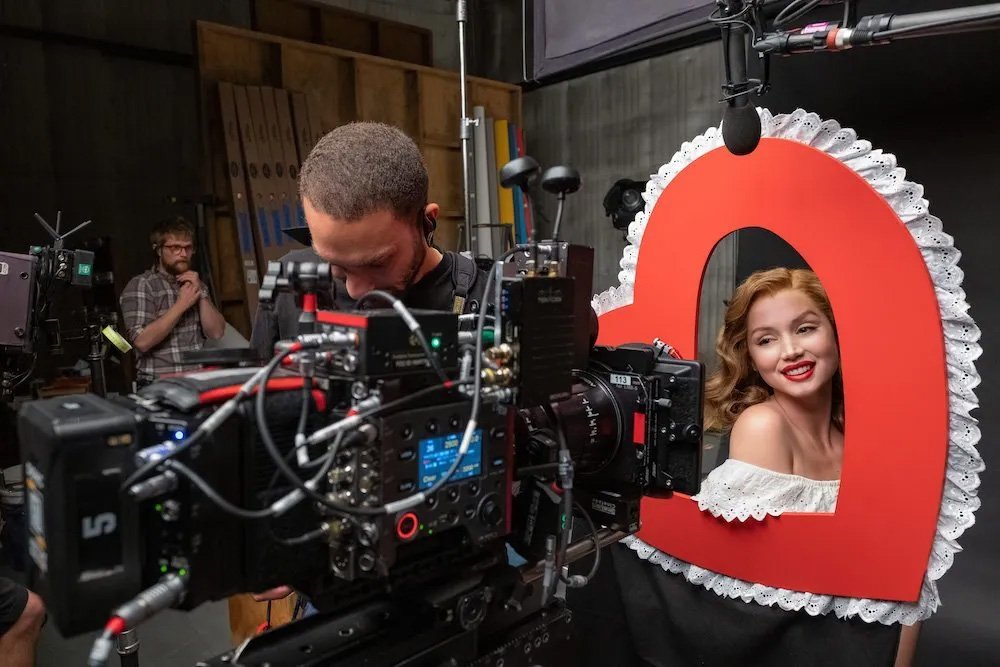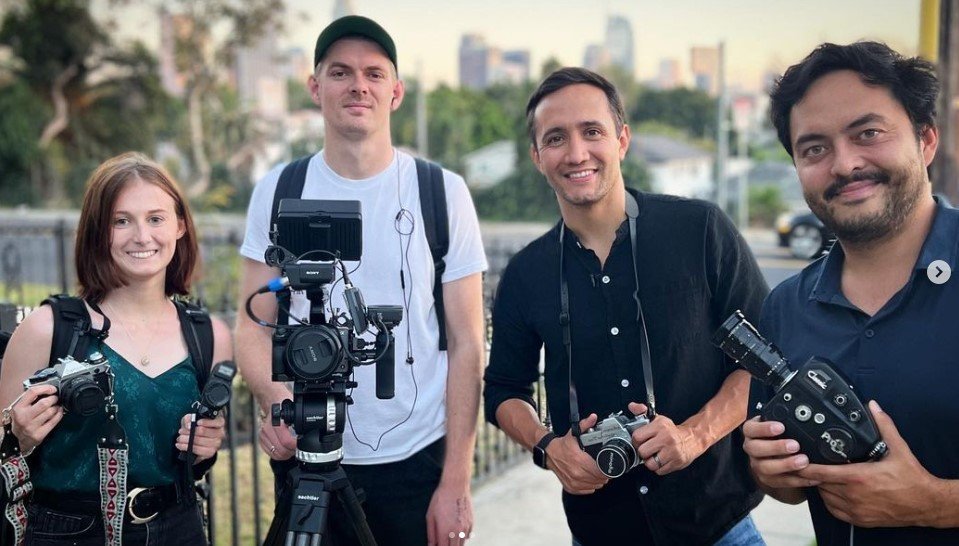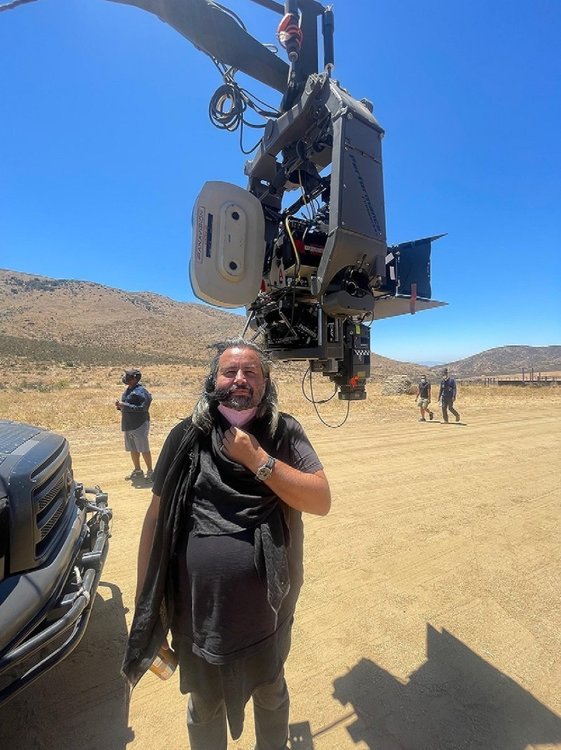-
Posts
1,267 -
Joined
-
Last visited
Everything posted by Tim Tyler
-
Do not BUMP your posts. Please read
-
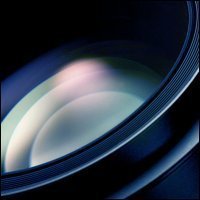
Adolescence - All About the Challenge
Tim Tyler posted a topic in On Screen / Reviews & Observations
First I'll say that I have not seen the finished product. I've just watched the BTS on Youtube. Why was it necessary to film each episode in one continuous take? Why was it necessary to produce this in such a way that undoubtably pushed every crew member and actor's stress level to the limit? A couple of decades ago I served as DoP on a few "48 Hour Film" projects. (No-budget, narrative shorts that are produced from script to screen in two days.) Although they were fun, rewarding, challenging and a good way to meet other local creatives, they always left me feeling like the finished video could have been so much better with more time to produce. I know... that's the point. But still, if each video's producer could get everyone together for two days to make a film, why not get everyone together for two weeks and make a much better film with fewer compromises? So what's the deal with Adolescence? Why not hide edits like Hitchcock did in Rope, or Mendes did in 1917? Especially when working with children. I don't get it.- 1 reply
-
- 1
-

-

Nikon to Acquire US Cinema Camera Manufacturer RED
Tim Tyler replied to Jeremy Saltry's topic in Cinematography News
If the deal actually happens, as a wholly owned subsidiary it's unlikely much will change regarding the products at RED, at least in the short term. Maybe Nikon will commission RED to build a line of Nikon branded cinema cameras (with a Nikon lens mount option?) but I doubt they'd aim to compete with or rebrand any of RED's existing top of the line cameras anytime soon. Nikon would really need to wow the market with a <$ 9,000 camera body that outperforms the competition before they can justify spending the money to compete with high end Arri, Sony and Canon gear. If things go well, eventually new RED cameras might be branded with the Nikon logo. What's certain though is that RED will no longer have the flexibility to be a "do whatever we want" company. They will need to answer to Nikon. -

Nikon to Acquire US Cinema Camera Manufacturer RED
Tim Tyler replied to Jeremy Saltry's topic in Cinematography News
Some perspective. February 2013: Sony, Red End Patent Dispute Red filed for an injunction against Sony, claiming that several of its new CineAlta products, particularly the 4K-capable F65, infringed on patents the company held. They requested that Sony not only be forced to stop selling the cameras, but that they be destroyed as well. Sony filed a countersuit against Red in April 2013, alleging that Red's entire product line infringed on Sony patents. In July 2013, both parties filed jointly for dismissal, and as of July 20, 2013, the case is closed. May 2019: Apple Goes After RED Over Key RAW Patent Apple Inc. filed a lawsuit against Red.com, LLC over several patents relating to digital cinema cameras and sensor processing.[51] Apple lost the case in November 2019. Apple argued that the patents related to Redcode Raw were "unpatentable", but a judge ruled that Apple's legal team had not provided sufficient evidence to back up their claims. November 2019: Court Dismisses Apple’s Attempt to Invalidate RED’s RAW Video Patent A US court dismissed Apple’s challenge to RED’s main RAW video patent, allowing RED to maintain some control over Apple’s ProRes RAW codec. May 2022: RED Sues Nikon for Infringing on its Video Compression Patents The lawsuit was filed in a southern California federal court today and asserts that the Japanese camera manufacturer and its United States subsidiaries have illegally infringed on seven patents that deal specifically with “a video camera that can be configured to highly compress video data in a visually lossless manner.” September 2022: Nikon is Fighting RED’s Lawsuit Over the Z9’s Compressed RAW Video Nikon admitted it was aware of multiple lawsuits that RED had filed in the past against other companies for similar infractions, but added that the claims that RED brought forward in those cases were “invalid” as they did not “satisfy the conditions of patentability.” April 2023: RED’s Lawsuit Against Nikon Dismissed Of note, a Rule 41 dismissal means that the two companies came together and agreed on something, Maddrey explains. While the public will likely never know what the two companies determined, given the money that was probably already spent to hire very well-known law firms on both sides, the two parties definitely decided that whatever agreement they could reach was better than the cost of going through with the litigation. RED’s attorneys likely would not want the case to go to court if there was any doubt that the patent wasn’t going to hold up. By dismissing the lawsuit, RED gets to keep its patent on the books. So while it could be that Nikon paid RED a royalty, it is just as likely that it could have been that RED didn’t want Nikon to pursue the case further to avoid the possibility of weakening its patent. If one court says a patent is invalid, that would have cascading effects. March 2024: Nikon to Acquire US Cinema Camera Manufacturer RED.com, LLC Nikon Corporation (Nikon) hereby announces its entry into an agreement to acquire 100% of the outstanding membership interests of RED.com, LLC (RED) whereby RED will become a wholly-owned subsidiary of Nikon, pursuant to a Membership Interest Purchase Agreement with Mr. James Jannard, its founder, and Mr. Jarred Land, its current President, subject to the satisfaction of certain closing conditions thereunder. -
LOS ANGELES (Mar. 3, 2024) – The American Society of Cinematographers (ASC) held its annual awards today with Hoyte van Hoytema, ASC, FSF, NSC earning the feature film award for Oppenheimer. The 38th ASC Outstanding Achievement Awards, held here at the Beverly Hilton, also honored Warwick Thornton for The New Boy in the Spotlight Award category and Curren Sheldon for the documentary King Coal. Winners in the television categories included M. David Mullen, ASC for The Marvelous Mrs. Maisel; Ben Kutchins, ASC for Boston Strangler, and Carl Herse for Barry. Jon Joffin, ASC took home the first ASC Award in the inaugural music video category for Jon Bryant’s At Home. This is van Hoytema’s first ASC Award. He was previously nominated for Dunkirk (2018) and Tinker Tailer Soldier Spy (2012). Watch at https://vimeo.com/918126106 Below is the complete list of winners and nominees: THEATRICAL FEATURE FILM (presented by Lawrence Sher, ASC) Edward Lachman, ASC for El Conde (Netflix) Matthew Libatique, ASC, LPS for Maestro (Netflix) Rodrigo Prieto, ASC, AMC for Killers of the Flower Moon (Apple TV+) Robbie Ryan, ISC for Poor Things (Searchlight) Hoyte van Hoytema, ASC, FSF, NSC for Oppenheimer (Universal Pictures) - winner SPOTLIGHT AWARD (presented by Rodney Taylor, ASC) Eric Branco for Story Ave. (Kino Lorber) Krum Rodriguez for Citizen Saint Warwick Thornton for The New Boy - winner EPISODE OF A ONE-HOUR TELEVISION SERIES (presented by Karen Pittman) Ricardo Diaz for Winning Time: The Rise of the Lakers Dynasty, “The Second Coming” (Max) Rob C. Givens for Gotham Knights, “Daddy Issues” (CW) M. David Mullen, ASC for The Marvelous Mrs. Maisel, “Four Minutes” (Prime Video) - Winner Cathal Watters, ASC, ISC for Foundation, “In Seldon’s Shadow” (Apple TV+) Glen Keenan for Star Trek: Strange New Worlds, “Hegemony” (Paramount+) LIMITED OR ANTHOLOGY SERIES OR MOTION PICTURE MADE FOR TV (presented by Titus Welliver) Dan Atherton for Great Expectations, “The Three Keys” (FX) Sam Chiplin for The Lost Flowers of Alice Hart, “Part 1: Black Fire Orchid” (Prime Video) Ben Kutchins, ASC for Boston Strangler (Hulu) - winner Igor Martinovic for George and Tammy, “Stand by Your Man” (Showtime) Jason Oldak for Lessons in Chemistry, “Book of Calvin” (Apple TV+) Tobias Schliessler, ASC for All the Light We Cannot See, “Episode 2” (Netflix) EPISODE OF A HALF-HOUR SERIES (presented by Dallas Liu and Ian Ousley) Julian Court, BSC for The Diplomat, “The James Bond Clause” (Netflix) Carl Herse for Barry, “Tricky Legacies” (Max) -Winner Jon Joffin, ASC for Schmigadoon, “Something Real” (Apple TV+) Blake McClure, ASC for Minx, “I Thought the Bed was Gonna Fly” (Starz) Andrew Wehde for The Bear, “The Bear” FX) DOCUMENTARY AWARD (presented by Alma Har’el) Jeff Hutchens for Murder in Big Horn, “Episode 1” (Showtime) Curren Sheldon for King Coal - Winner D. Smith for Kokomo City (Magnolia Pictures) MUSIC VIDEO AWARD (presented by Mark Pellington) Scott Cunningham, ASC for Gorilla (Performed by Little Simz) Jon Joffin, ASC for At Home (Performed by Jon Bryant) -Winner Andrey Nikoleav for Tanto (Performed Cassie Marin) This was Mullen’s fifth nomination for The Marvelous Mrs. Maisel and his second consecutive win. Joffin has previously earned ASC Awards for Titans (2022), Motherland: Fort Salem (2020), and Beyond (2019). Last year’s ASC feature film winner was Mandy Walker, ASC, ACS for Elvis. Honorary awards at the ceremony included Spike Lee receiving the ASC Board of Governors Award (presented by Matthew Libatique, ASC, Ellen Kuras, ASC; and Ernest Dickerson, ASC) and Don Burgess, ASC was honored with the ASC Lifetime Achievement Award (presented by Robert Zemeckis). Steve Fierberg, ASC was honored with the ASC Career Achievement in Television Award (presented by Sarah Treem). Amy Vincent, ASC received the Presidents Award (presented by Beverly Wood). The Bud Stone Award was presented by ASC President Shelly Johnson to Sony’s Dan Perry. For more information regarding the ASC Awards, visit the ASC website at www.theasc.com
-

Premium membership to post in the marketplace
Tim Tyler replied to Samuel Preston's topic in General Discussion
I've added a Marketplace Subforum where any member can create a listing as long as the item value is $200 or less. Marketplace Listings Under $200 / €200 -

Premium membership to post in the marketplace
Tim Tyler replied to Samuel Preston's topic in General Discussion
Not such a hefty amount when you combine that motor with the complete ACL II package you advertised a few months ago. -

Premium membership to post in the marketplace
Tim Tyler replied to Samuel Preston's topic in General Discussion
It's basically a small step that helps weed out scammers. For the last ten years I've been manually vetting every single new member account added to the forum, but a few troublemakers still get through. I mean, I'm not running ID's through INTERPOL or anything like that, but an effort is made. A PayPal transaction helps confirm their identity. -
Oscar winning Director of Photography, Erik Messerschmidt, takes us behind the scenes the explain how he shot the opening of David Fincher's new hitman thriller, 'The Killer,' starring Michael Fassbinder.
- 1 reply
-
- 1
-

-
A few months ago, cinematographer Sam Nicholson approached Nanlux’s Mark Bender with a request. He had an interesting project, a live-action trailer for a video game involving live actors on a virtual set. Together with a former colleague, executive producer Mark Long, Nicholson shared that the transmedia project “was a great challenge. I love being involved in any production which has the potential to be innovative.” Director Jerry Flaherty built all the virtual environments himself, which allowed Nicholson to work on inventing new production techniques. “It was a very creative environment with everybody participating. Our record was 79 setups in a day with an average of 70 setups a day. Technology is moving very quickly and allowed us to move quickly.” With a lengthy 12 weeks of pre-production, Nicholson explained that “Unreal assets had to be created beforehand, because you are only as good as your assets on set; although we decided to balance our ICVFX between our mobile LED volume and Ultimatte on greenscreen. I’m a real proponent of not allowing technology to define the creative, but letting the creative define the technology we use,” he said. With Venice II cameras in the Rialto configuration, paired with Angenieux lenses and Nanlux lights, “we had the best hardware configured in a way that allowed us to create what seemed like an impossible project: a 10-day shoot to create 45 minutes of high-level composites on a very tight budget. Our goal was to create an intense live action pilot using live action actors and stunt performers set in a photo real, futuristic world built from the Shrapnel game assets. Our creative goals far exceeded our budget and shooting schedule. Could Shrapnel look better than current trans media projects? Could it be done less expensive, and shot much faster? If we could deliver on good, fast and on budget, we’d have the potential of a great production model for a live action series going forward.” For Shrapnel's unique volumetric lighting setup, Nicholson used 40 Nanlux Evoke 900Cs, as well as 8 Evoke1200Bs and 8 Dyno 1200C soft panels. “We tested other lights, but Nanlux lights gave us both hard and soft light, full color plus high output for daylight. These lights are ideal for image based, kinetic lighting. The bang for the buck is pretty much unbeatable. They are full spectrum, high output, durable and economical; which is an essential combination if you are going to ask your producer for four times more lights. But if you can save 10 minutes on each new lighting setup, there is a definite savings at the end of the day.” Nicholson and his visual effects team mapped the lights through wireless DMX into their custom kinetic lighting control system. “In virtual production you have the live action, but then you have the background being fed by Unreal Engine which creates the 3D environment. We tied our virtual lights in UE5 to the on-set Nanlux lights, so when you adjust the Nanlux light, the UE5 virtual light follows what you are doing on set,” he explained. “Our Nanlux lights and UE5 allowed us to truly connect our on-set lighting to our virtual sets.” The team also designed a new tool, a hand-held DMX trigger, which could be assigned to any light on set or programmed into a crazy sequence. “When doing safe pyro with an air mortar, it can be kind of dry looking since there is no real fire. Just dust and debris. So we took two open lens 900Cs, which are very bright, and put them on either side of the air mortar, then triggered a sequence with a synchronized explosion of light to create the illusion of a fireball. I think it’s a fantastic step forward for any pyro effect. It’s like a giant non-gun; safe, fast and very effective. Nanlux lights responded well to our trigger and control system with results that were really stunning.” Nicholson and his visual effects team mapped the lights through wireless DMX into their custom kinetic lighting control system. “In virtual production you have the live action, but then you have the background being fed by Unreal Engine which creates the 3D environment. We tied our virtual lights in UE5 to the on-set Nanlux lights, so when you adjust the Nanlux light, the UE5 virtual light follows what you are doing on set,” he explained. “Our Nanlux lights and UE5 allowed us to truly connect our on-set lighting to our virtual sets.”
-
- 1
-

-
Los Angeles, CA - November 08, 2023 – JAMM, the acclaimed visual effects and color studio announces their tenured collaboration with famed colorist Beau Leon, and welcomes emerging phenom colorist Jess Jinx (née Vile) to their growing staff. Beau Leon has been working with JAMM since January and brings with him an impressive portfolio bolstered by collaborations with top DPs and directors. With his keen eye for light and hue, his deft touch, and his surgical attention to detail, Beau is applauded by brands, agencies, and film studios around the world for delivering outstanding results that elevate the sensibilities of cinematic storytelling. Jess Jinx ventured to the US after 10 years working with Framestore in the UK. As a celebrated colorist across the pond, she brings with her a wealth of experience working with esteemed brands such as BBC, Spotify, Jimmy Choo, Dr. Marten, Campari, and Cartier. With her unique expertise and versatility in commercials, long-form music videos, and episodic productions, Jess flexes her creative vision across cultures. JAMM’s Executive Producer Ashley Greyson says, “I'm thrilled to be involved in the growth of our color department as we welcome these two talents to elevate our creative capabilities even further. Beau is Beau. His vision is unmatched and we consider ourselves very fortunate to have him coloring with us. And Jess’ arrival brings a refreshing wave of energy and talent to our team. With them both on board, we look forward to continuing to provide the highest level of expertise and service that defines JAMM.” Rounding out the team alongside Jess, Beau, and Ashley are veteran color assistant Aldo Rosati and color producer Dan Ginks. Executive Producer and founding partner of JAMM, Asher Edwards adds, "I’m excited to launch our second color suite, which not only helps fuel the evolution of JAMM, but also gives us even more resources to service the most creative storytellers in the industry.” JAMM is an independently owned, artist-driven visual effects and color studio known for delivering exceptional creative. The studio offers a powerful combination of innovative artistry and advanced technology, collaborating on complex productions that come to life with 2D and 3D visuals, and precise color finishing. The JAMM team builds and maintains trusted long-term relationships by providing nimble strategic guidance at every turn, and an unwavering commitment to quality. https://www.jammvisual.com/ -----------------------------------------------------------------------------------------------------------
-

The Perfect Interview Key Light - Godox F600Bi
Tim Tyler replied to Tim Tyler's topic in Lighting for Film & Video
-

New Sony BURANO CineAlta Digital Cinema Camera
Tim Tyler replied to Tim Tyler's topic in Cinematography News
-
Designed for highly mobile, solo cine-style shooting, the Sony BURANO 8K Digital Cinema Camera offers up to 8.6K video capture in a compact, full-frame form. Unique in-camera stabilization for both E- and PL-mount lenses, Fast Hybrid Autofocus, and an easily adjustable ND filter enhance single-user capture and seamless image matching, making the CineAlta BURANO camera ideal for use as your VENICE B or C camera.
-

The Perfect Interview Key Light - Godox F600Bi
Tim Tyler replied to Tim Tyler's topic in Lighting for Film & Video
-
Sorry for the confusion! I disabled the home page we've had for a while since the main stories near the top are updated so infrequently. Are there features from that page that you miss?
-

The Perfect Interview Key Light - Godox F600Bi
Tim Tyler replied to Tim Tyler's topic in Lighting for Film & Video
I've powered the Aputure 600D with a $130 190ah V-mount from Amazon and it worked fine. Don't recall if the light was at 100%. You're right though. For a long interview at max brightness you'll need to have serious battery power. -
“In the face of an industry-wide crisis, I want to unequivocally voice the International Alliance of Theatrical Stage Employees’ stalwart support for striking entertainment workers in SAG-AFTRA and the Writers Guilds. The Actors and Writers’ cause is reasonable and just, and is part of the same struggles of every worker whose labor powers America’s film and television industry. The heartbeat of entertainment is the creativity and dedication of working people using their talents and skills to bring cherished stories to life. It is this very heartbeat the studios threaten to silence with reckless disregard for fairness and human artistry. The urgency of this moment cannot be overstated. Our industry is at a crossroads, and the actions taken now will affect the future of labor relations in Hollywood and beyond. The world and history are watching as entertainment workers once again take on the Alliance of Motion Picture and Television Producers (AMPTP), an ensemble of media mega-corporations collectively worth trillions of dollars, including Amazon, Apple, Disney, Netflix, Universal, Warner Brothers, and others. I am disturbed by the studios’ weak attempts to divide and conquer union members across our industry in recent days. The economic fallout for below-the-line crewmembers is real, but IATSE members know the studios were responsible for shutting down film and television production months before their negotiations with the writers and actors even started. Make no mistake — if the studios truly cared about the economic fallout of their preemptive work slowdown against below-the-line crewmembers, they could continue to pay crewmembers and fully fund their healthcare at any moment, as they did in 2020 during the onset of the COVID-19 pandemic. Instead, grassroots groups of writers, actors, and directors like The Union Solidarity Coalition are stepping up to fund mutual aid that directly benefits our members, and I recognize them for organizing this much-needed support. It’s plain as day who our allies are. We stand shoulder-to-shoulder with our SAG-AFTRA and Writers Guild kin. Their fight today foreshadows our fight tomorrow, and we must stand united until the studios acknowledge our collective worth, and the workers prevail.” In Solidarity, Matthew D. Loeb International President, IATSE # # # The International Alliance of Theatrical Stage Employees or IATSE (full name: International Alliance of Theatrical Stage Employees, Moving Picture Technicians, Artists and Allied Crafts of the United States, Its Territories and Canada), is a labor union representing over 168,000 technicians, artisans and craftspersons in the entertainment industry, including live events, motion picture and television production, broadcast, and trade shows in the United States and Canada. For more information please contact: General: comms@iatse.net Press: press@iatse.net
-

The Perfect Interview Key Light - Godox F600Bi
Tim Tyler posted a topic in Lighting for Film & Video
The new Godox F600Bi Bi-Color 4x4 LED Light Panel looks to be the perfect interview key light for corporate and documentary projects. I just pre-ordered one. $1750 out the door seems to be a good value. There are of course other light mat options, but none this affordable. For indoor interviews I'll typically I'll use a 2x1 CCT panel, add a softbox, add a 4x4 diffusion frame and a couple of flags. That's a junior stand, three C-stands, a few sand bags and 15 minutes of setup time. The 4kg Godox panel is light enough to only need a baby stand, and maybe the 4kg controller can be used to weight the stand base. That saves time, effort and gear that I need to transport. There aren't any published photometrics that I could find but at 600 watts it's got to be very bright. It's foldable, has wireless DMX and it can run off V-mount batteries. Doesn't look like it includes a 4x4 grid or an Aputure-style stand clamp for the controller. Godox F600BI Overview from B&H A slim and versatile fixture designed to give flexibility in any environment, the foldable, 4 x 4' F600Bi Bi-Color LED Light Panel from Godox delivers convenience and portability for film and television professionals. The 600W LED panel light has a wide CCT range adjustable from 2700 to 8500K and offers impeccable color rendition with a CRI and TLCI of 96. The F600Bi also features stepless brightness dimming from 0 to 100% and along four dimming curves—linear, S-curve, exponential, and logarithmic. The light also comes with 11 preprogrammed special effects modes. In addition to local control on the unit's controller power supply, the F600Bi supports industry-standard control protocols such as DMX512 and LumenRadio CRMX Control, as well as built-in 2.4 GHz wireless control and Bluetooth support, enabling compatibility with the optional Godox RC-R9 Remote and the Godox Light App. The F600Bi is rated at IP65 for dust and water resistance, ensuring the light bead and controller remain safe and operational in adverse conditions. The light comes with the controller, a connector cable, a power cable, a detachable metal frame and adapter holder for mounting, a softbox for diffusion, and two bags for carrying the panel and its accessories. -
ARRI Tech Talk: Shooting 9:16 content with ARRI cameras Shooting content that requires a vertical deliverable? In this Tech Talk Sean explains how to make the most of our Open Gate recording formats as well as our specific Vertical Format Adapters to get high-quality, cinematic 9x16 footage.
-
B&H currently has the ARRI SkyPanel S60-C LED Softlight with Manual Yoke at 50% off. Probably won't last long. https://www.bhphotovideo.com/c/product/1139001-REG/arri_l0_0007063_skypanel_s60_c_led_softlight.html/BI/1221/KBID/1557/DFF/d10-v21-t1-x625586/SID/DFF
-
- 1
-

-
Congratulations to James Friend! WINNER James Friend - ALL QUIET ON THE WESTERN FRONT NOMINEES Darius Khondji - BARDO, FALSE CHRONICLE OF A HANDFUL OF TRUTHS Mandy Walker - ELVIS Roger Deakins - EMPIRE OF LIGHT Florian Hoffmeister - TÁR
-
BLONDE cinematographer Chayse Irvin ASC, CSC takes us behind the scenes of the BLONDE production. See the process that went into recreating some of Marilyn Monroe's most iconic shots for this film. Filmmaker Magazine has also published a in-depth interview with Chayse. Here's an excerpt: Filmmaker: You shot Blonde digitally and God’s Creatures on 35mm. How did you choose the format for each? Irvin: It was tricky on Blonde because I do this thing I call woodshedding. It’s a jazz term where you isolate yourself and come up with harmonic devices that take you out of the ordinary and keep them in your pockets so you can pull them out during a set. I was developing a bunch of ideas like that to use in Blonde. I would shoot black and white film, Double-X and then Vision 3, and I felt like that recreated certain images from her life more authentically. However, when we got into the real nitty gritty of getting the shoot done, one of the challenges was Marilyn’s dialect. We wanted to protect Ana [de Armas] and give her the chance to support the film and the dialect by shooting extended takes. I think the choice [to shoot digitally] came out of that. Also, Andrew had done some episodes of Mindhunter, and he felt more trusting shooting video after that than he had in the past. So, I think Andrew and I did conflict on [of film versus digital]. In the end, Andrew requested what’s called a “Pepsi Challenge,” where we shot Alexa, Sony VENICE and a little bit of film, and we viewed those tests in a theater. No one knew which footage came from which camera except me, and the VENICE is the camera we ended up selecting [for the color portions of the film]. Cinematographer Chayse Irvin and Ana de Armas as Marilyn Monroe. Cr. Matt Kennedy / Netflix © 2022 Here's an excerpt from the Cinematography World article: After extensive testing, supported by Panavision, Woodland Hills, and the company’s lens guru Dan Sasaki in particular, Irvin selected Panavison PVintage lenses, which are based on Panavision Ultra Speed lenses designed in the 1970s, paired with the Sony Venice camera, for the movie’s colour sequences, and ARRI Alexa XT B&W for the B&W portions. He also added H-series sphericals, built with vintage glass and coatings, that have soft roll-off in the image and emphasise skin quality, to his optical mix. “During testing, we did a Pepsi blind-challenge for Andrew between different lenses and large format cameras,” Irvin explains. “When we screen the tests Andrew developed a particular connection to the PVintage lenses as they had a certain fragility, where the image was sort of falling apart, and helped to evoked the period as well as the emotion. They are very forgiving on skin and skin pores when shooting large format, which meant I did not need to resort to softening the image using filters on the many close-ups in the film. “On a practical level, the front diameter on the PVintage glass is consistent across the focal length range, so you can use the same matte box, and the smooth mechanical performance is really helpful for the focus pullers. “The nature of those tests, in interior and exterior settings, natural and artificial light, was really informative as regards the camera choice. Things like the ISO settings and ability to ride the exposure via the internal NDs on the Sony Venice revealed that it was way faster at helping us to react to things as they were happening. Blonde, behind the scenes, Ana de Armas (Marilyn Monroe”), Chayse Irvin (Cinematographer), Cody Jacobs (Gaffer) Cr. Matt Kennedy / Netflix © 2022
-
- 2
-

-
In a report shot entirely on film, NBC News’ Gadi Schwartz tells us about the growing demand for vintage cameras as photography shoots up in popularity. The boom has been fueled by younger generations, social media and a desire to slow down in a hyperconnected world. When setting out to report this story, Gadi realized there was only one way to really do it justice. Take a behind-the-scenes look as Gadi shoots a few rolls with photographer Jason Kummerfeldt in Los Angeles, with their journey captured on a film camera.
-
Source: KODAK https://www.kodak.com/en/motion/blog-post/nope Hoyte van Hoytema FSF NSC ASC "One of the major challenges on Nope was how we were going to shoot the night-time sequences, which were mainly all big set pieces. When Jordan and I went on the night scouts around Agua Dulce, we saw that there was no available light whatsoever, and realized there was no way we were ever going to be able to light and photograph these large expanses convincingly. "But nature at night is very special and interesting. As we stood there, and our pupils dilated, we started to notice very fine details in the mountain ridges and the expansive presence of the space around us and thought it would be great to capture that essence in the film. "Of course, we could have shot traditional day-for-night, but that has its limitations because you must have the sun exactly in the right place, or we could have tried greenscreen and CGI, but even then, the results can look kind of fakey." Accordingly, Van Hoytema casted his mind back to some of his previous challenges and, with an inspired twist of creative thought, came up with a ground-breaking solution to shoot the night scenes and a pioneering new way of shooting day-for-night using a hybrid of film and digital. As he explains, "When I worked on Ad Astra, we encountered a similar problem when it came to shooting the lunar battle/chase/action sequence with Moon Rovers in Death Valley, and our inability to light up a big area with a single light source. We needed to cover enough distance to be able to shoot the chase, but soft light or double shadows from any sources would have been an awful giveaway. "So with the help of my friend, Kavon Elhami, who runs a camera house, we purchased two decommissioned 3D-stereo camera rigs on which we could mount two cameras. One was an ARRI Alexa, specially customized to capture infrared, the other a regular 35mm film camera. Instead of lining-up the cameras for 3D parallax, we found a new way to align them so that both cameras were shooting the exact same image – one infrared, the other on film – so that every frame would overlay perfectly later in postproduction. “The infrared camera is only sensitive to a very specific wavelengths of light and the images are monochromatic. When you shoot in natural sunlight, with a slight contrast boost, it results in images that are brightly lit, however, the skies are dark. The 35mm camera contains all of the vital color and texture information. In the perfect composite of the two images in post-production, the desert resembled the lunar surface. That meant we got close to the lighting character on the real moon. “So for Nope, I had the idea of scaling up that same kind of rig and using it to shoot our day-for-night scenes in broad daylight – but this time using an ARRI Alexa 65, pointing upwards vertically and shooting in infrared mode, in perfect alignment with a Panavision System 65mm film camera, which was on the horizontal axis. “However, it’s vitally important that the different gates and lenses are identical, that you have exactly the same depths-of-field, that your focus pulls translate in exactly the same way, and that the two images are completely in-sync.” As part of his quest in creating the new day-for-night rig, Van Hoytema necessarily visited Panavison in LA, as the company owns and maintains the small number of existing 65mm cameras. "During the development and test phase we worked with Dan Sasaki, the magician at Panavision, who can build whatever you want, based on his understanding of physics and what is needed artistically," says Van Hoytema. "He made sure the twin sets of Panavision Sphero lenses we used were tuned to be identical in their performance." Development of the specialist rig required a close cooperation between ARRI, Panavision, Van Hoytema and his own development company, Honeycomb Modular, in what he describes as "a beautiful collaboration between amazing people at amazing companies, to solve one person's obsession to do something a little weird and nerdy." "In the early stages, we took a rather shabby-looking prototype rig, held together with screws, cable ties and gaffer tape, out into the desert to shoot tests. My DIT, Elhanan Matos, is not your standard DIT, and when we do new technology like this, he's all over it. He helped in getting the two-camera synched up, and although the video taps on the 65mm camera remain poor, he gave us a good on-set approximation of what the final image would look like. "We then liaised with my DI colorist Greig Fisher at Company3 in LA, mixing those two sets of images together, and the result looked to me like an entirely plausible-looking night. In fact, using this technique you can peer much deeper into the dark expanse than we had done before on Ad Astra. And, after additional lighting effects were added in VFX, our night scenes really came alive. When you sit in the cinema, especially in an IMAX theatre, and you look around the image it’s a very, very special immersive experience." The production-ready day-for-night camera rig proved to be a sizeable, weighty and somewhat unbalanced lump, and it still needed to be motivated for visual storytelling purposes. "We didn't want to be limited in terms of how we would move the rig around," says Van Hoytema. "So I worked with Dean Bailey and his team at Performance Filmworks, to work out how it could be adapted to fit on their various gyro-stabilized Edge cranes vehicles. I’ve worked with them before on Tenet and Dunkirk, where their vehicles had to drive over extremely rough terrain, and I had the same ambition to put this rig through equally rough stuff. "They worked really hard to adapt their stabilized head for the rig, and all-of-a-sudden, we had the ability to drive everywhere – we could follow running horses and shoot other dramatic action scenes. It became a wonderful, crazy tool that was capable of giving us shot after shot that you might have thought were impossible and probably have never seen before." As for the ramifications for other filmmakers, Van Hoytema says, "I think it's something that can, and probably will, be used more and more. Right now, through Honeycombe Modular, I am developing a new device that will enable you to use just one lens for two cameras, meaning that the rig can be much smaller, and any lens artefacts translate into both formats making post easier."


